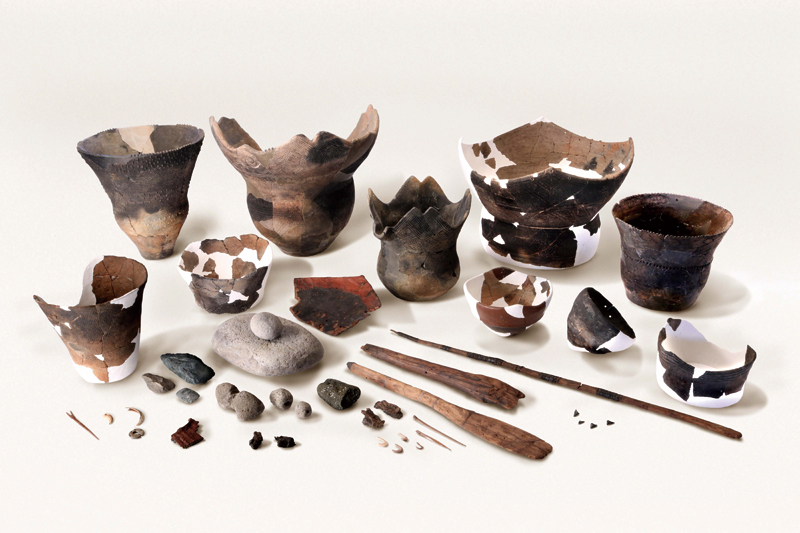Relics Excavated from the Shell Mound (Shell Midden)
In addition to the earthenware and stone tools used at the time, it is noteworthy that lacquered wooden products and bone tools remained because of the environment of the peat layer, were excavated from the Haneo Shell Mound (Shell Midden).
This shell midden was a workplace for preparing seaside mammals and fish, and it is believed that earthenware was used to boil shellfish and nuts, and stone tools were used for processing. Fish found in addition to large deep-sea rockfish, were porpoise, bonito, swordfish, shark, and other fish, indicating active open-sea fishing.
The remains of the mammals and fish used for food were processed into fish hooks and hair ornaments.
The large number of earthenware excavated in Izu and the Tokai region show that people interacted with each other through the sea.
These excavated relics are designated as important cultural assets of Kanagawa Prefecture because they are important for understanding life at that time.
The results of dating the ruins indicate that they are from 5750 to 5350 years ago. The lowland area around the Nakamura River where the shell midden is located, was a sea called old Nakamura Bay from 9,000 to 6,000 years ago. Subsequent ground activities raised it to a height of about 25 meters.

羽根尾貝塚出土遺物